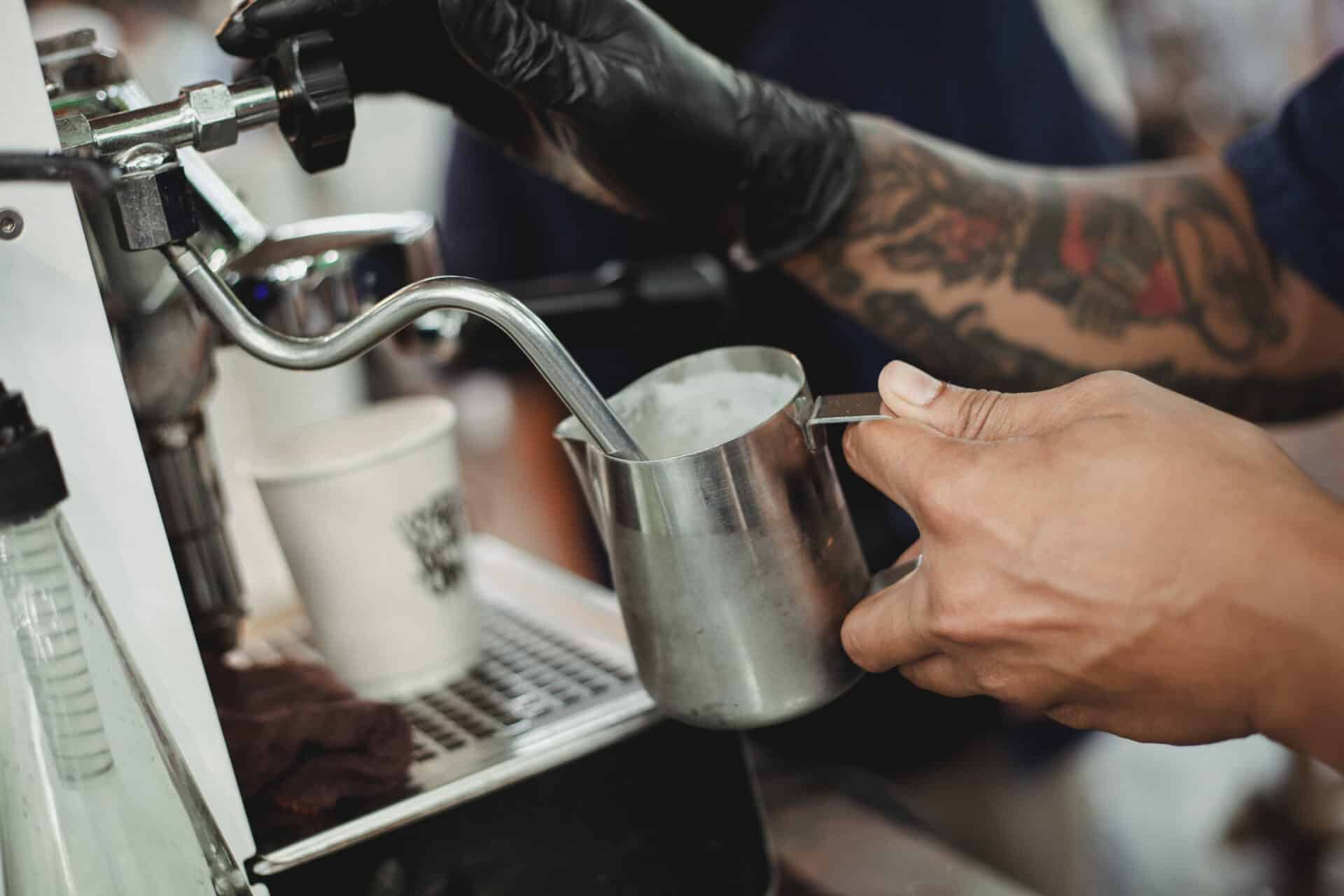Steam distillation is a process that has been used for centuries to separate compounds or substances that have different boiling points. It is based on the principle that when a mixture of liquids with different boiling points is heated, the vapors of each component will rise at their respective temperatures. The vapor passes through a condenser that cools and condenses it back into a liquid form. This condensed liquid is then collected and separated from the original mixture. Steam distillation is an effective method for separating mixtures of essential oils, fragrances, flavors, and other volatile compounds from water.Steam distillation is a method of distillation that uses steam to separate mixtures of liquids with different boiling points. This process involves boiling the liquid mixture in a still where the steam rises and carries the more volatile components of the mixture with it, allowing them to be condensed and collected. Steam distillation is used to extract essential oils from plants, as well as for purification of organic compounds.
Overview of the Steam Distillation Process
Steam distillation is an essential oil extraction process that is used to separate volatile compounds from plant materials. It works by heating the plant material with steam, which causes the volatile compounds to vaporize. The vapor is then condensed back into a liquid, which contains the essential oils. Steam distillation is often used to extract essential oils from plant materials such as flowers, leaves, and bark. This process is also used to create fragrances and flavors for food and beverages. The steam distillation process can be done either manually or with automated machinery.
Manual steam distillation involves the use of a still, which is a container that holds the plant material and heated water or steam. The still has an opening where the vaporized essential oils can escape. The vapor passes through a condenser, which cools the vapor back into a liquid form. This liquid contains both water and essential oils, so it must be separated before the oil can be collected. Manual steam distillation can take several hours and requires careful monitoring of temperatures and pressure levels in order to ensure proper extraction of essential oils.
Automated steam distillation uses machinery to control
The Benefits of Using Steam Distillation
Steam distillation is a widely used method of separating and purifying compounds using steam. It is an efficient and cost-effective way to produce high-quality, pure products from raw materials. Steam distillation offers a number of advantages over other forms of extraction, including increased safety, greater purity, and improved efficiency. Here are some of the benefits of using steam distillation:
Increased Safety
Steam distillation is one of the safest forms of extraction available. By heating the raw material with steam, the risk of exposure to dangerous chemicals or fumes is significantly reduced. This means that workers can work in close proximity to the process without worrying about their safety. In addition, steam distillation requires less energy than other types of extraction which can lead to lower running costs.
Greater Purity
The main benefit of steam distillation is that it produces a product with a higher purity than other methods. This makes it ideal for producing essential oils and fragrances, as well as for extracting other compounds such as pharmaceuticals
Steam Distillation
Steam distillation is a process used to separate and purify compounds that have low boiling points. It involves heating a mixture of substances to their boiling point, then using steam to carry the volatile components away from the non-volatile components. The steam is then condensed back into liquid form, allowing the two types of compounds to be separated. Steam distillation is often used in industries such as food processing, pharmaceuticals, and aromatherapy.
Steam distillation is a popular method of extraction because it allows for the separation of compounds without having to use harsh chemicals or solvents. It also has the advantage of being able to separate compounds with very different boiling points. This makes it ideal for separating essential oils from plants, as many essential oils have very low boiling points and would be destroyed by other extraction methods.
Types of Steam Distillation
There are several different types of steam distillation processes that can be used for different applications. The most common type is direct steam distillation, which involves passing steam directly through a mixture of substances in order to extract the
How Does a Steam Distiller Work?
A steam distiller works by taking regular tap water and running it through a distillation process. This process involves boiling the water to a vapor, then condensing the resulting steam back into its liquid form. During this process, most of the contaminants are left behind in the boiler. The condensed liquid is then collected in a storage container for either drinking or other uses. This method of purification is very effective in removing many contaminants from the water, including bacteria, viruses, and dissolved solids.
Steam distillation is also used to create essential oils from plant material. The plant material is placed in a still with hot steam passing through it. As the steam passes through the plant material, it extracts essential oils which are then condensed and collected in a separate container. This process keeps all of the beneficial compounds from the plants intact while eliminating any impurities that may have been present in the raw material.
Steam distillers can also be used to create distilled spirits such as whiskey and vodka. Here, grain or other starchy materials are cooked with hot steam and fermented into alcohol. The resulting alcohol vapors

Materials Needed for Steam Distillation
Steam distillation is a process used to extract essential oils from plants. It involves boiling the plant material in water, and then capturing the essential oil vapors released in the steam. To perform a steam distillation, several materials are needed, including a heat source, a distillation vessel, an oven-proof container, and tubing.
The heat source is necessary to generate the steam needed for the process. A gas stove or electric hot plate can be used as a heat source, but an open flame should never be used as it can cause safety issues. The distillation vessel is placed on top of the heat source and should be made of either glass or stainless steel. It should also be equipped with an outlet valve at the bottom for releasing steam.
The oven-proof container is placed below the distillation vessel and captures the condensed essential oil vapors. This container should also be made of either glass or stainless steel and should have ventilation holes at the top to allow steam to escape. Tubing must also be used to connect the distillation vessel to the oven-proof
Setting Up a Steam Distiller
Setting up a steam distiller is not as difficult as many people think. The basic process involves boiling water and using the steam to extract the desired compounds from the plant material. This method has been used for centuries to make essential oils, and it is still one of the most popular ways to do so. In order to get started, you will need a few key pieces of equipment.
The first thing you will need is a steamer or boiler, which will be used to generate the steam needed for distillation. The boiler should be able to hold enough water for your needs and should also have some kind of temperature control. You will also need some kind of distilling apparatus, which can range from a simple pot still to more complicated setups such as fractional distillation columns.
Once you have all of your equipment, it’s time to set up the steam distiller. Start by filling the boiler with water and bringing it to a boil. Once it has reached boiling point, lower the temperature slightly and add your plant material into the boiler with some kind of container or basket that
Steam Distillation Process
Steam distillation is a process used to separate compounds based on their different boiling points. It is commonly used to purify essential oils from plants and can also be used for other organic compounds. The process involves passing steam through the material to be distilled, which causes the compounds to evaporate at their respective boiling points. The steam and vaporized compounds are then collected in a condenser where they condense back into liquid form. This liquid is then collected and separated into its various components.
The first step in steam distillation is to heat the material being distilled until it reaches its vaporization temperature. This can be done with either an external heat source such as a stove or an open flame, or with an internal heat source such as an electric heater or steam generator. Once the material has reached its vaporization temperature, the next step is to introduce the steam into the vessel containing the material. The steam helps to break down and evaporate any volatile components of the material, which are then captured in a condenser for collection.
The next step is to cool down the condenser so that any vapors that

Conclusion
Steam distillation is a process by which compounds with different boiling points are separated. This process works by introducing steam to the mixture of compounds, which causes the more volatile compound to evaporate. The vapor is then condensed and collected as a separate layer from the original mixture. This process is used in a variety of industries, such as food and beverage manufacturing, pharmaceuticals, essential oil extraction, and more. It is also important to note that steam distillation can be used to purify water by removing impurities and bacteria.
Overall, steam distillation is an effective method for separating compounds with different boiling points and purifying liquids. It has been used for centuries in various industries and continues to be used today due to its effectiveness and simplicity.
Therefore, understanding how steam distillation works can help you better understand these processes and use them effectively in your own projects or applications.

